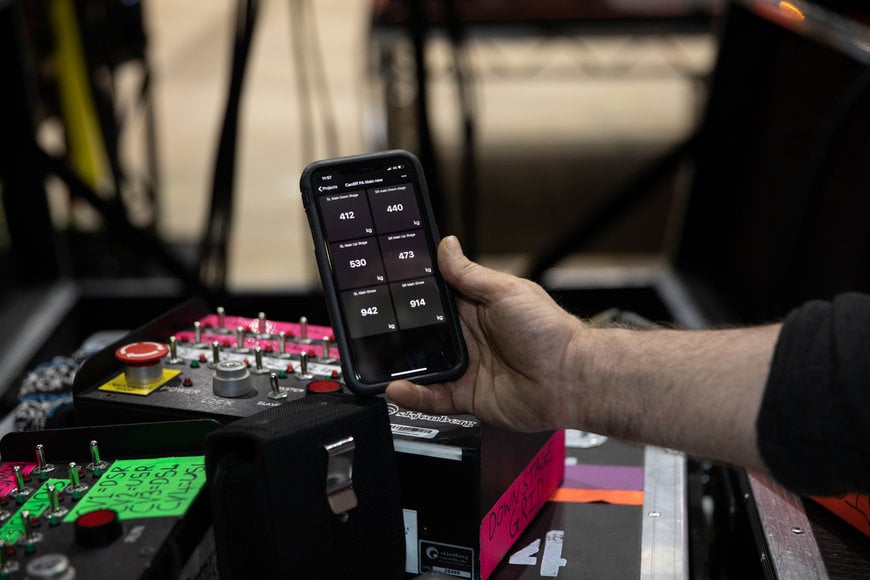electronics-journal.com
17
'21
Written on Modified on
Measuring strain using low-cost Bluetooth technology
Wireless strain bridge measurement doesn’t have to be an expensive undertaking.

In measuring strain, engineers often feel like they’re stuck between a rock and a hard place when it comes to wireless data acquisition, with wired setups adding complexity and some fully-fledged cloud setups being time or cost prohibitive. Here, Matt Nicholas, product design manager at sensor and signal conditioning specialist Mantracourt, explains how the company’s recent B24 Bluetooth strain transmitter offers a good balance between wireless functionality and cost.
Strain bridge measurement is found in a wide range of industrial sensors, typically load cells, to measure forces such as tension and compression, or in other sensors using Wheatstone bridge circuits, such as pressure or torque transducers.
Before wireless technologies became popular, any time an engineer needed to take a load cell reading, they would — and many still do — rely on a physical connection to the load cell. This would require the operator to directly plug in their hand terminal to the load cell to take a reading, or use a human machine interface (HMI) to display the data from multiple sensors.
This setup is fine if you’re measuring the reading from a single load cell, but add a few units and the complexity begins to add up. The cabling and installation costs of wiring such a system can often end up being more than the load-cells themselves, and it takes time before you can get up and running.
Not only does this require the engineer to get up close to the application to take the reading — potentially putting them at risk of injury — they also need to use a dedicated, often proprietary, terminal along with all the cost and programming associated with that.
The options for wireless transmission are varied, from low power devices that use the 2.4 GHz transmission format, which are able to transmit on multiple channels and are remarkably tolerant of radio frequency interference, to devices that use mesh or star network topologies. These networks are more sophisticated, self-healing and work at greater range than their non-mesh counterparts — but this is at the expense of being power hungry, lower resolution and more complex to configure.
And then there are fully fledged, cloud-integrated IoT platforms, which may be overkill if all you’re doing is periodically measuring the load on a container as bulk material is decanted ahead of it being processed. This on-demand, session-based approach means the operator only takes a reading when they need it rather than being inundated with an ongoing live feed from their system.
Much has been said about big-data overload, so the value of getting just the data you need, when you need it most, can’t be overstated enough. While IoT platforms have their merits for accessing information remotely, in real-time and sharing it automatically with people across a business, sometimes all you need is a quick and easy way of taking a reading using a device you already have, like your smartphone or tablet.
This is why Mantracourt developed the B24 Bluetooth Strain Transmitter. We chose Bluetooth 4.0 Low Energy because it is much more efficient for portable, battery-powered, use — the transmitter can run for 10 months on a pair of single AA batteries. Secondly, it can easily be used with your existing devices — most phones and tablets already have Bluetooth built in.
The B24 is a small module that comes in an IP67-rated enclosure, or as a board-only option to be integrated as required. The transmitter is easily wired directly into the load cell using field terminals and works with sensors across a range of sensitivities, from a few grams all the way to a few hundred tonnes.
The result is a versatile transmitter that can be used anywhere there’s a load cell, or strain bridge input, whether it’s in automotive, industrial, agriculture or more. It has even been used on a sailing yacht to monitor strain in the rigging system.
One key feature that sets the B24 apart from other Bluetooth transmitters, is the ability for multiple transmission. By tapping into the advertising data channels of Bluetooth Low Energy, it allows multiple transmitters to transmit to one device, and one transmitter to be viewed by multiple devices. This one-to-one, one-to-many, many-to-one and many-to-many capability really opens up the access to data.
However, the hardware technology is only one half of the story. Being able to use your phone to take a reading is only valuable if the app offers the same kind of flexibility and customisation as a dedicated HMI or control system. To achieve this, we’ve developed an app for both iOS and Android that features dashboards that can be customised to your own preferences.
Users can create multiple projects, each with their own dashboards and list of modules. These can be used to build powerful expressions to display just the information they need on various tiles.
So, what implications does this have for industry? These breakthroughs in Bluetooth technology and app customisation mean that engineers have more flexible options available to them, ranging from complete real-time IoT platforms, all the way through to manual measurement, with Bluetooth offering a cost-effective option in between — proving that strain measurement doesn’t have to be an expensive undertaking.
www.mantracourt.com

